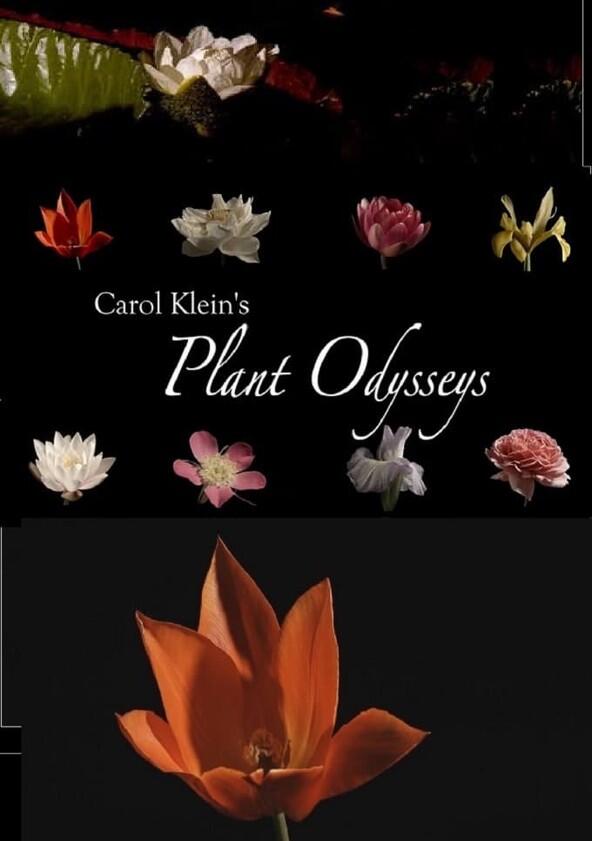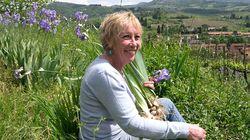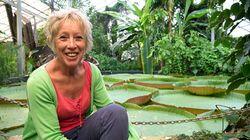Carol Klein's Plant Odysseys - Season 1

Season 1

Episodes

Roses
The first episode looks at the rose. The rose has always meant so much to Britain - it is embedded in our history, our fairy tales and our hearts. Carol goes on a very British plant odyssey. To understand the origins of our most cherished garden flower, we need look no further than the hedgerow. Our native dog rose - Rosa canina - has changed very little in 37 million years. Its prickles, acting like tiny crampons, allow it to climb above other plants and protect them from being eaten. As a second line of defence, they even harbour bacteria to fend off hungry assailants. The Romans adored its simple flowers, but they adored densely-petalled mutations even more and soon began to develop these by taking cuttings.
Roses are loved for their perfume as much as their beauty, but the scent a rose produces is not for our benefit. Professor Geoff Ollerton explains where in the flower the wonderful smells originate and how odour plumes spread in order to entice passing pollinating insects. These aren't the only chemical messages that the rose can broadcast. When under aphid attack, they release an aroma that acts like a distress beacon to summon in ladybirds and other insects for an aphid meal.
The rose has come to be so much more than just a collection of cells and chemical reactions. At Exeter Cathedral, Carol sees what an important symbol it has been to religion, and we discover that a chance meeting in the 18th century between two roses on the Island of Reunion created a whole new class of rose - one that would lead to a passion for breeding the exquisite, voluptuous blooms that we know and love today.

Tulips
There are 6000 delightful varieties of tulips in the world today, with new colours and forms being cultivated every year. Carol Klein's odyssey to uncover the colourful history of this popular flower begins high in the mountains of Eastern Turkey where a species tulip, one of the early ancestors of those we grow in our gardens, can be found flourishing in the harshest of environments; a feat only possible due to its extraordinary evolution. Thermal imaging cameras reveal a small pocket of warm air trapped inside the flower's petals giving visiting pollinators a cosy place to rest their flight muscles.
Back at sea level, Carol visits Istanbul's Rustem Pasha Mosque, richly decorated with painted tulips on every surface, and discovers how in the 15th and 16th centuries, Ottoman sultans, excited by the bright and variable colours of tulips, worked out how to cross-breed them to create ever more extravagant flowers.
The next leg of Carol's odyssey takes her to the place that comes to everyone's mind when thinking of tulips - Holland. At the Frans Hals Museum in Haarlem, Carol is thrilled to be shown a unique hand-painted record of 400 of the most prized specimens of the Dutch tulip era and discovers how the wealthy elite were struck by tulip mania and the economy was almost brought to its knees. 'Broken' tulips became the obsession, but their extraordinary colours and patterns were caused by a virus. Tulip breeder Jan Ligthart shows Carol some similar examples bred today without the virus. It takes many years and much cross-breeding to create something so striking but even though the virus is now under control, one infection remains - our love affair with the tulip.

Iris
The third leg of Carol's odyssey takes her on a journey from England to Turkey, to Italy and home again, discovering the intricate biology of the iris flower and its cultural significance to mankind over thousands of years. Carol takes a close-up look into the intimate relationship between bees and irises and, under the guidance of an evolutionary plant biologist, uses an endoscopic camera to reveal how an insect with UV vision sees each iris flower.
Carol travels to mainland Europe, learning of the importance of some iris species in the funeral traditions of Islam and the use of irises in perfume manufacture in Florence. Discover how a 'beard' changed this beautiful flower's fortunes in horticulture, and why such a peculiar adaptation arose. In England, Carol meets with an iris enthusiast rebuilding the famed collection of Cedric Morris. She learns how the famous artwork of this painter extended beyond brush and canvas and into the realms of iris.

Waterlily
In the fourth and final chapter of the series, Carol Klein takes a look at one of the most recognisable and influential flowers in our world, the waterlily. It is a plant of unlikely economic importance, spiritual significance and artistic inspiration.
She travels to the far east to investigate when and where some of the first flowering plants evolved, and discovers waterlilies are among the earliest branches of angiosperms still around today - practically living fossils. Carol visits the Buddhist temples of South Korea and drinks lotus flower tea with the monks. They revere the lotus, a close relative of the waterlily. Later Carol takes part in a Korean festival held in honour of the lotus.
Back in Europe, she meets one of the world's top experts in waterlily breeding and learns about of one of the most intimate known plant-insect relationships - a dramatic, overnight colour and sex change. Carol joins the waterlily and in its murky aquatic environment to uncover some of this iconic plant's ingenious adaptations, and its unique prehistoric pollinating system.
Recently Updated Shows

The Proof Is Out There
The Proof Is Out There takes an in-depth look at some of the most incredible and thought provoking videos of unexplained phenomena and mysterious must-see moments of all time. Each half-hour episode explores and analyzes the full story of each irregularity in question from bizarre footage of people seemingly immune to lightning, to a fifty-foot snake, apocalyptic sounds in a man's backyard, enigmatic creatures, and UFOS that split and dive underwater. Through expert examination and the use of the latest technologies, The Proof Is Out There aims to get to the bottom of what's real? What's fake? And everything in between.

Providence Falls
In 1844 Ireland, Liam O'Conner, a rogue and a thief, falls in love with Cora McLeod, a fiery but sheltered aristocrat's daughter, who is promised in marriage to a man she barely knows. Their plan to make a new life together in America is thwarted, and the consequences of Liam and Cora's unlikely love ripples through time, causing everyone to relive the events of the past. Now the Angels of Destiny need Liam's help to set things right and if he doesn't succeed, his very soul is on the line. They transport Liam to present day to help this incarnation of Cora fall in love with Finn, the man she was destined to marry in 1844. Liam would give anything to reunite with his beloved Cora but only he retains the memories of their past together. Now a cop in Providence Falls, Oregon, Cora feels an inexplicable connection to Liam, who is introduced as her new partner. And as they tackle a big case together, Liam sees the same passion and adventurous nature in Cora that he had fallen in love with. With everyone's lives at stake, Liam must overcome unexpected and otherworldly obstacles in his mission. Perhaps none as powerful as his own undying love for Cora.

The Chicken Sisters
The Chicken Sisters is a family drama dipped in southern charm and served up with a saucy side of romance. The setting is the fictional town of Merinac, where a generations-old rift between dueling fried chicken restaurants – Mimi's and Frannie's – has left the founders' families fractured and the locals taking sides. When popular cooking competition show Kitchen Clash comes to town, this could be the recipe for ending this feud once and for all. But things are fixing to heat up both inside and outside of the kitchen as the reality show spotlight causes sparks to fly as secrets are spilled and feathers get ruffled.

